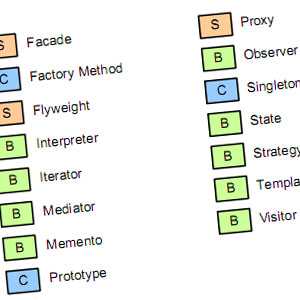
Template pattern
Information drawn from
This is a behavioural design pattern based on defining the skeleton of the algorithm or implementation of an operation, but deferring some steps to subclasses. It lets subclasses redefine certain steps of an algorithm without changing the algorithm’s outward structure.
In this example, we have a Template class Employee that implements work method partially. It is for the subclasses to implement responsibilities method to make it work as a whole. We then create two subclasses Developer and Tester that extend the template class and implement the required method to fill the implementation gap.
class Employee {
constructor(name, salary) {
this._name = name;
this._salary = salary;
}
work() {
return `${this._name} handles ${this.responsibilities() /* gap to be filled by subclass */}`;
}
getPaid() {
return `${this._name} got paid ${this._salary}`;
}
}
class Developer extends Employee {
constructor(name, salary) {
super(name, salary);
}
// details handled by subclass
responsibilities() {
return 'application development';
}
}
class Tester extends Employee {
constructor(name, salary) {
super(name, salary);
}
// details handled by subclass
responsibilities() {
return 'testing';
}
}
// usage
const dev = new Developer('Nathan', 100000);
console.log(dev.getPaid()); // 'Nathan got paid 100000'
console.log(dev.work()); // 'Nathan handles application development'
const tester = new Tester('Brian', 90000);
console.log(tester.getPaid()); // 'Brian got paid 90000'
console.log(tester.work());
------------------------------------------------------------------------
Last update on 04 Feb 2020
---